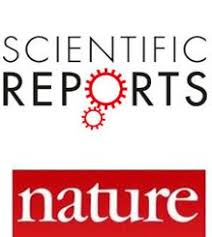Ver ítem
- xmlui.general.dspace_homeCentros Regionales y EEAsCentro Regional Patagonia NorteEEA BarilocheArtículos científicosxmlui.ArtifactBrowser.ItemViewer.trail
- Inicio
- Centros Regionales y EEAs
- Centro Regional Patagonia Norte
- EEA Bariloche
- Artículos científicos
- Ver ítem
Sugar responsiveness could determine foraging patterns in yellowjackets
Resumen
Sympatric-related species often exhibit resource partitioning. This can occur through diferent mechanisms, such as behavioral, morphological, and sensory variations, leading to qualitative, temporal, or spatial diferences in resource exploitation, such as consuming diferent types of food. Sensory-based niche partitioning could be the underlying mechanism through which closely related species efectively reduce niche overlap. Here we ask whether variations
[ver mas...]
Sympatric-related species often exhibit resource partitioning. This can occur through diferent mechanisms, such as behavioral, morphological, and sensory variations, leading to qualitative, temporal, or spatial diferences in resource exploitation, such as consuming diferent types of food. Sensory-based niche partitioning could be the underlying mechanism through which closely related species efectively reduce niche overlap. Here we ask whether variations in sensory responses to carbohydrates could refect diferences in the foraging patterns of two Vespula species present in Patagonia. For this, we established (i) the response thresholds toward carbohydrate solutions of foraging V. germanica and V. vulgaris in the laboratory, (ii) the sugar concentration of foraged carbohydrates in the feld, and (iii) possible efects of incoming sugar concentration and performance at individual and colony levels. Results indicate a higher sucrose response threshold in V. germanica than V. vulgaris. Field results indicate that higher carbohydrate concentrations foraged by V. germanica, with 57% of V. germanica foragers returning with concentrations above 50% w/w, while only 23% of V. vulgaris foragers did so. These diferences in sucrose sensitivity and foraging patterns positively correlate with colony size, irrespective of the species. Our results suggest that competition could be reduced in these closely related invasive social wasp species through sensory diferences in their sugar perception levels, which would lead to them foraging diferent carbohydrate sources. This study suggests that sensory niche partitioning could promote species coexistence in these social wasps.
[Cerrar]

Fuente
Scientific Reports 13 : Article number: 20448 (2023)
Fecha
2023-11
Editorial
Nature
ISSN
2045-2322
Formato
pdf
Tipo de documento
artículo
Palabras Claves
Derechos de acceso
Abierto
 Excepto donde se diga explicitamente, este item se publica bajo la siguiente descripción: Creative Commons Attribution-NonCommercial-ShareAlike 2.5 Unported (CC BY-NC-SA 2.5)
Excepto donde se diga explicitamente, este item se publica bajo la siguiente descripción: Creative Commons Attribution-NonCommercial-ShareAlike 2.5 Unported (CC BY-NC-SA 2.5)


